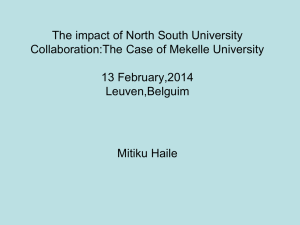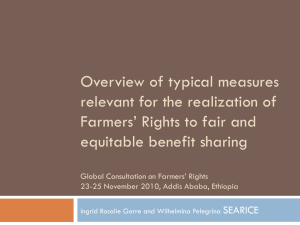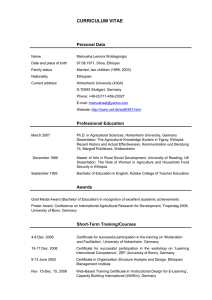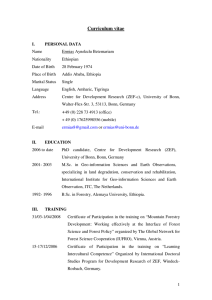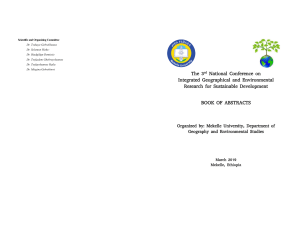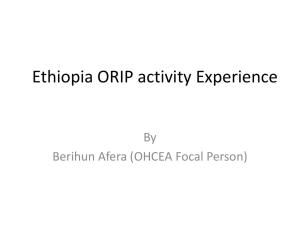Local innovation and initiative in managing biodiversity in northern
advertisement
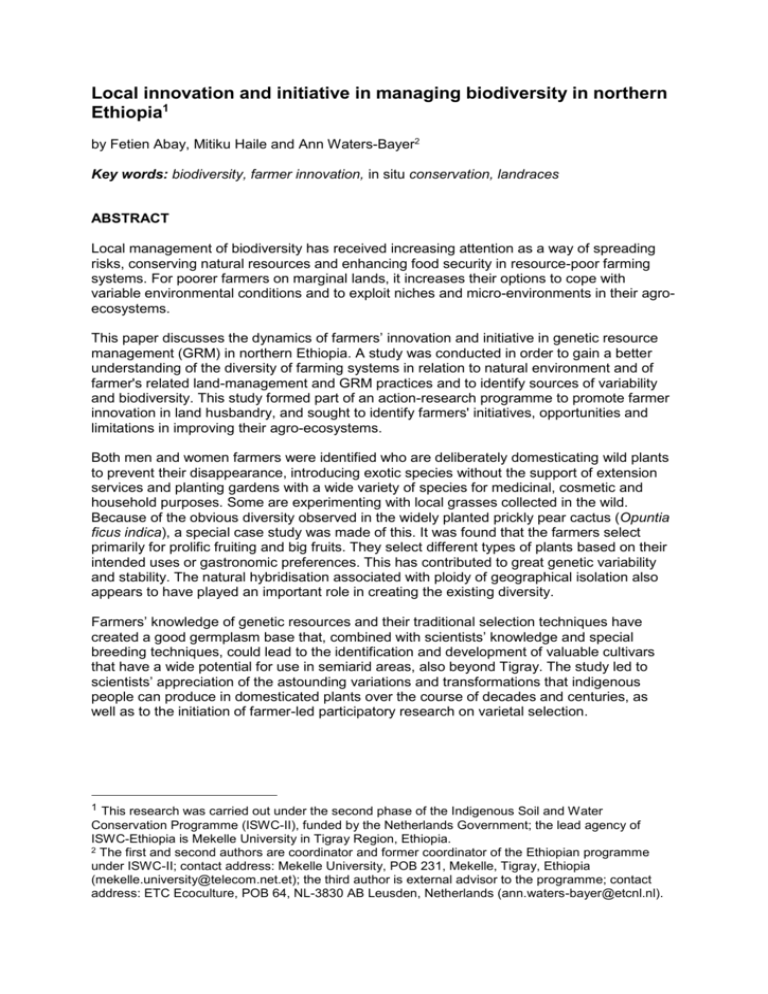
Local innovation and initiative in managing biodiversity in northern Ethiopia1 by Fetien Abay, Mitiku Haile and Ann Waters-Bayer2 Key words: biodiversity, farmer innovation, in situ conservation, landraces ABSTRACT Local management of biodiversity has received increasing attention as a way of spreading risks, conserving natural resources and enhancing food security in resource-poor farming systems. For poorer farmers on marginal lands, it increases their options to cope with variable environmental conditions and to exploit niches and micro-environments in their agroecosystems. This paper discusses the dynamics of farmers’ innovation and initiative in genetic resource management (GRM) in northern Ethiopia. A study was conducted in order to gain a better understanding of the diversity of farming systems in relation to natural environment and of farmer's related land-management and GRM practices and to identify sources of variability and biodiversity. This study formed part of an action-research programme to promote farmer innovation in land husbandry, and sought to identify farmers' initiatives, opportunities and limitations in improving their agro-ecosystems. Both men and women farmers were identified who are deliberately domesticating wild plants to prevent their disappearance, introducing exotic species without the support of extension services and planting gardens with a wide variety of species for medicinal, cosmetic and household purposes. Some are experimenting with local grasses collected in the wild. Because of the obvious diversity observed in the widely planted prickly pear cactus (Opuntia ficus indica), a special case study was made of this. It was found that the farmers select primarily for prolific fruiting and big fruits. They select different types of plants based on their intended uses or gastronomic preferences. This has contributed to great genetic variability and stability. The natural hybridisation associated with ploidy of geographical isolation also appears to have played an important role in creating the existing diversity. Farmers’ knowledge of genetic resources and their traditional selection techniques have created a good germplasm base that, combined with scientists’ knowledge and special breeding techniques, could lead to the identification and development of valuable cultivars that have a wide potential for use in semiarid areas, also beyond Tigray. The study led to scientists’ appreciation of the astounding variations and transformations that indigenous people can produce in domesticated plants over the course of decades and centuries, as well as to the initiation of farmer-led participatory research on varietal selection. 1 This research was carried out under the second phase of the Indigenous Soil and Water Conservation Programme (ISWC-II), funded by the Netherlands Government; the lead agency of ISWC-Ethiopia is Mekelle University in Tigray Region, Ethiopia. 2 The first and second authors are coordinator and former coordinator of the Ethiopian programme under ISWC-II; contact address: Mekelle University, POB 231, Mekelle, Tigray, Ethiopia (mekelle.university@telecom.net.et); the third author is external advisor to the programme; contact address: ETC Ecoculture, POB 64, NL-3830 AB Leusden, Netherlands (ann.waters-bayer@etcnl.nl).

